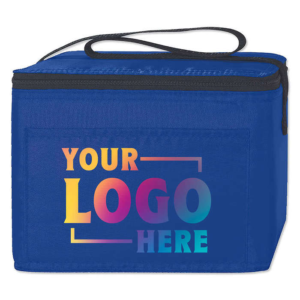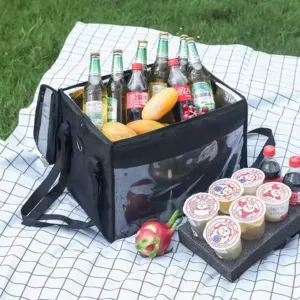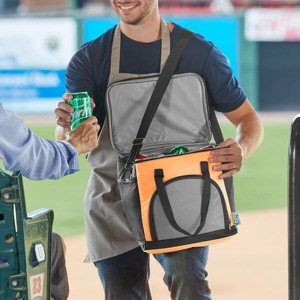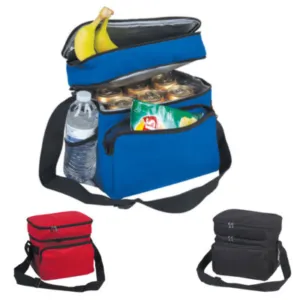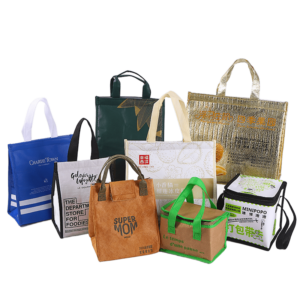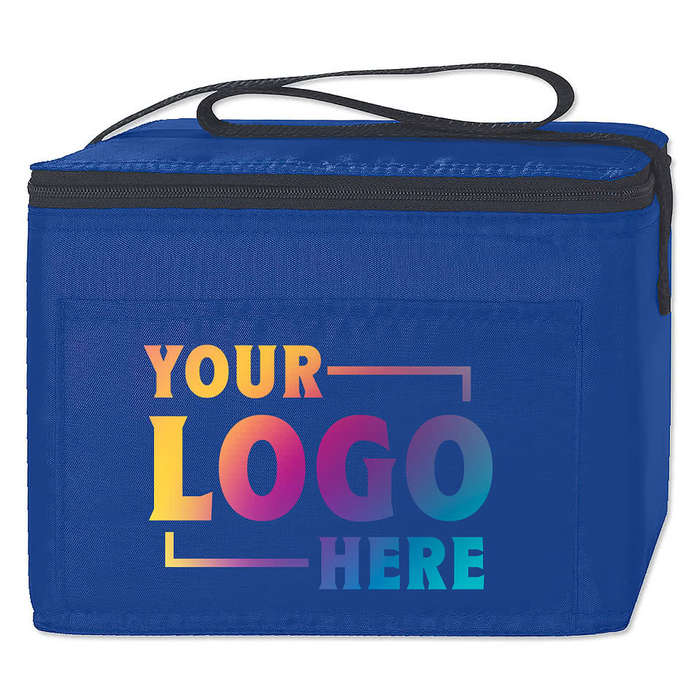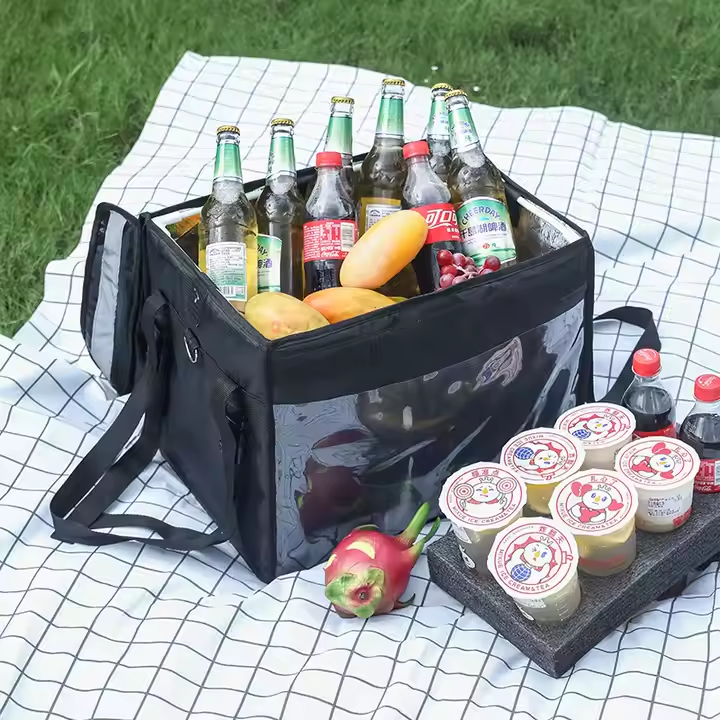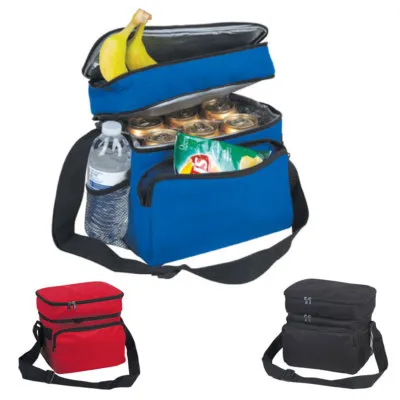Understanding the differences between low-end and high-end cooler bags is essential for making the right purchase—especially for buyers in outdoor gear, hospitality, or supermarket supply. This list breaks down their distinctions in insulation, durability1, performance, and value.
7 Differences Between Low-End and High-End Cooler Bags
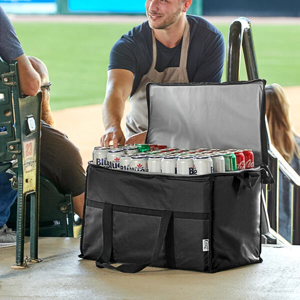
High-end cooler bags offer superior insulation, durability, and features, while low-end bags trade performance for lower cost.
Choosing the right cooler bag can impact your experience. Let’s explore key differences to help you decide what best suits your needs.
Insulation Quality and Thickness
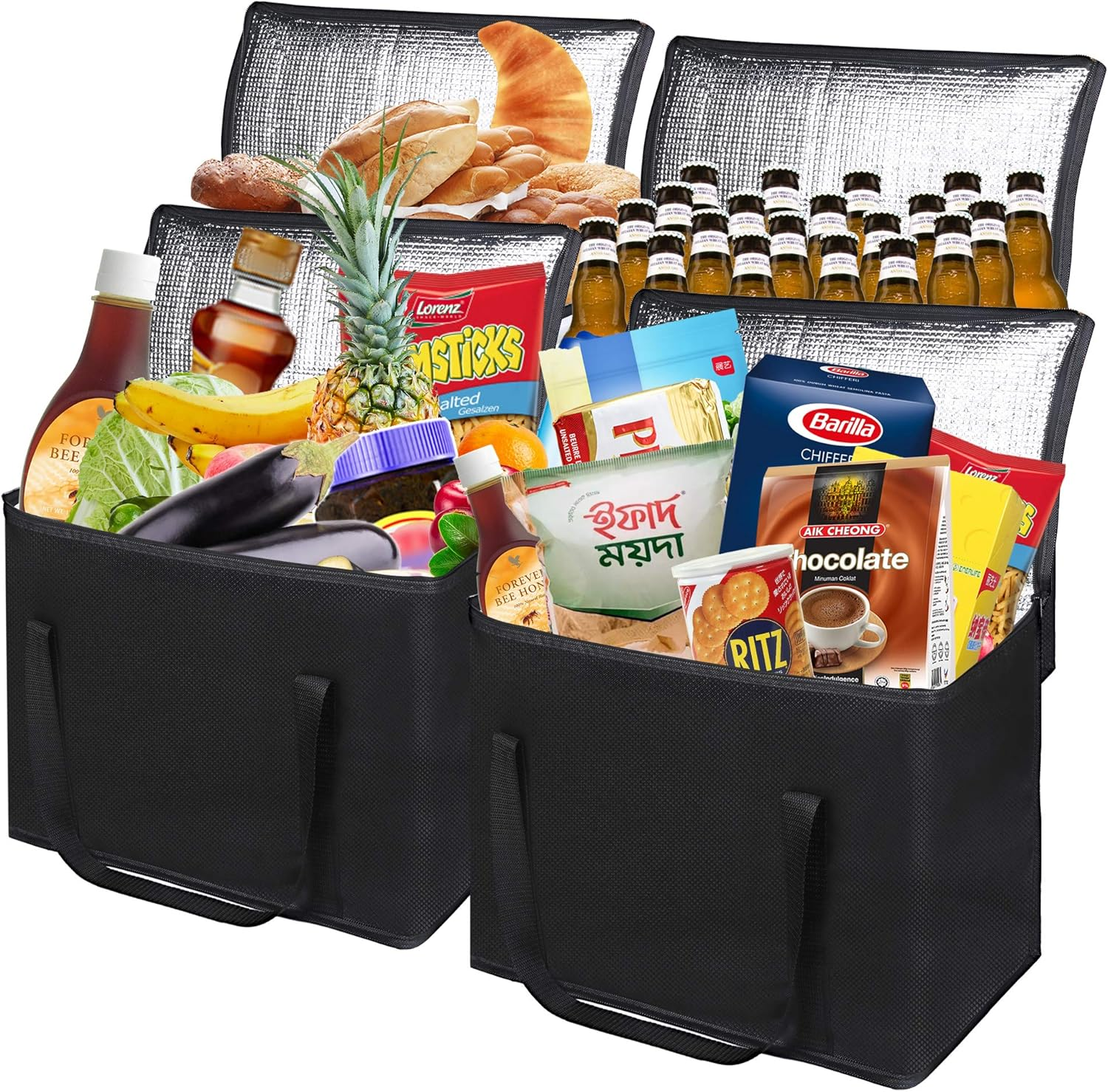
High-end cooler bags are designed to maximize ice retention using advanced insulation materials.
Key Differences in Insulation Design
| Feature | High-End Cooler Bags | Low-End Cooler Bags |
|---|---|---|
| Foam Type | Closed-cell foam | Open-cell or low-density foam |
| Thickness | 1.5–2.5 inches | 0.5–1 inch |
| Inner Lining | Reflective Mylar or aluminum | Basic PE or vinyl |
| Layering | Multi-layer construction | Single-layer |
High-end models use multiple layers of dense foam and reflective liners that significantly reduce heat transfer. This keeps ice solid for longer periods, even in hot environments. On the other hand, low-end bags often feature minimal insulation, which leads to rapid ice melt. If insulation quality2 is critical to your use—such as for beach outings or food delivery3—premium options provide measurable advantages in temperature control.
Outer Materials and Durability
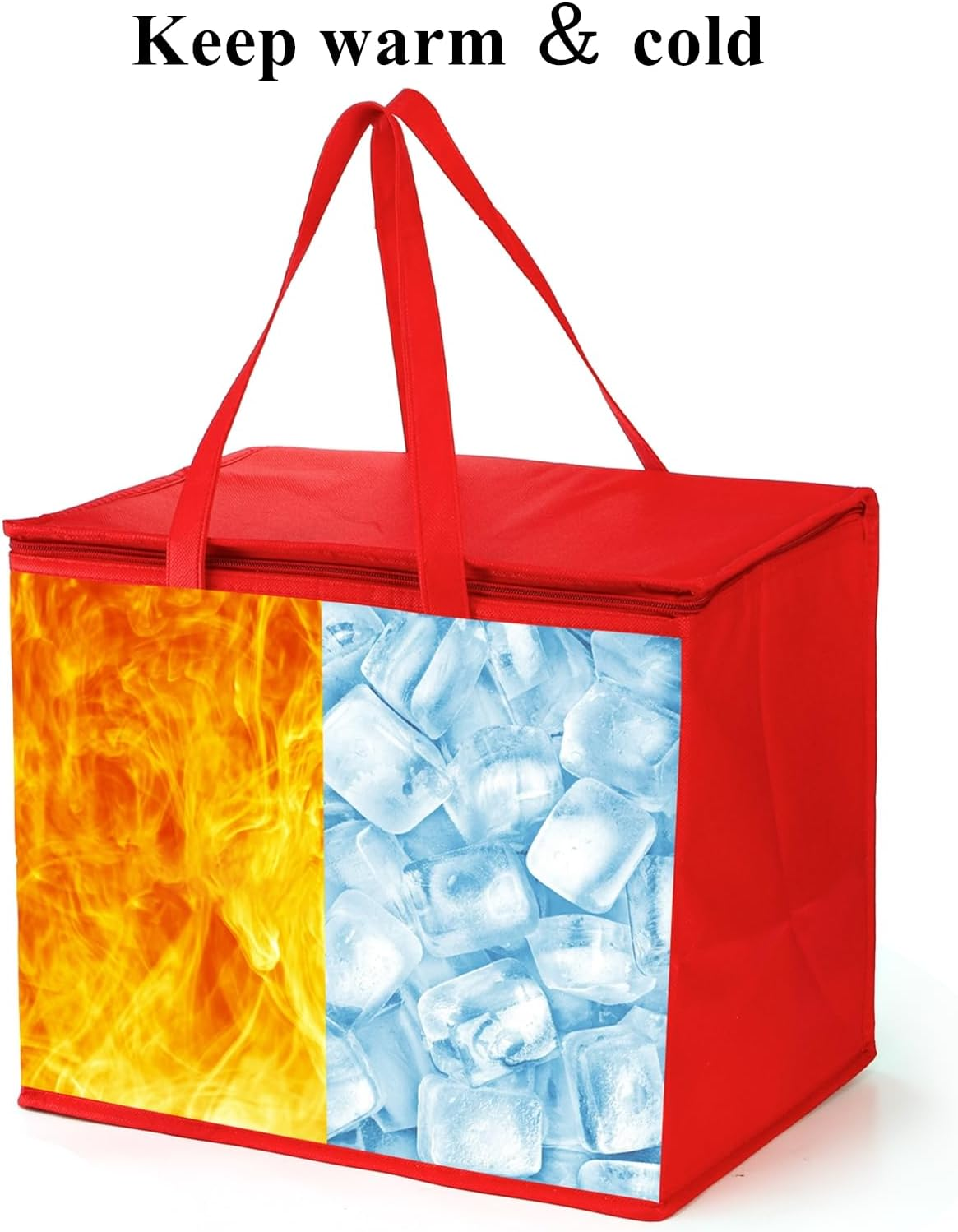
The outer material of a cooler bag affects how well it withstands outdoor elements and daily wear.
Material Construction and Toughness
| Component | High-End Cooler Bags | Low-End Cooler Bags |
|---|---|---|
| Outer Fabric | 600D-1680D Polyester or Nylon | Thin polyester or PVC |
| UV Protection | Often included | Rarely included |
| Tear Resistance | High | Low |
| Stitching | Double or reinforced seams | Single stitching |
High-end bags use rugged materials like ballistic nylon, which resist abrasion, water, and UV rays. This makes them suitable for hiking, fishing, or outdoor catering. Lower-end bags, however, are more prone to rips and environmental damage, especially with repeated use. If you need reliability and resilience, investing in a high-end cooler pays off over time.
Ice Retention Time
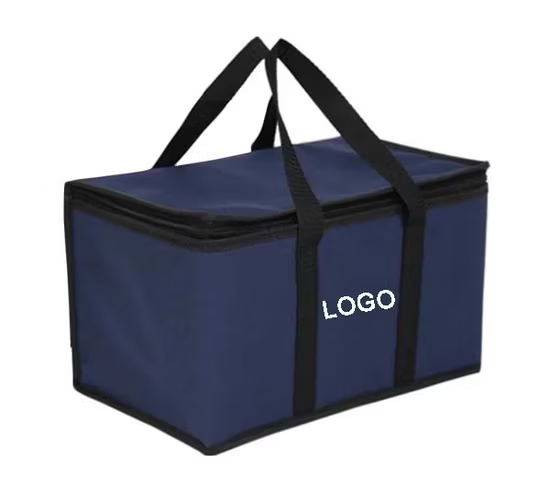
The duration a cooler bag can retain ice is a key performance factor.
Ice Retention by Tier
| Cooler Type | Average Ice Retention Time |
|---|---|
| High-End | 24–72 hours |
| Low-End | 4–12 hours |
Premium cooler bags can maintain ice for multiple days due to dense insulation and leak-proof closures. Some soft coolers perform nearly as well as hard-shell models. In contrast, budget bags often fail to keep items cold beyond a few hours. This makes them impractical for camping or delivery over long distances.
Waterproofing and Leak Resistance

Preventing leaks is essential for both hygiene and performance.
Waterproofing Technology Comparison
| Feature | High-End Cooler Bags | Low-End Cooler Bags |
|---|---|---|
| Inner Liner | PEVA, aluminum, or TPU | PVC or PE film |
| Zipper Design | Waterproof and sealed | Standard or open zippers |
| Welded Seams | Yes | Rare |
High-end bags include advanced features such as welded seams and waterproof zippers. These prevent water from leaking or seeping in. Low-end bags usually use cheaper, stitched seams that may leak when filled with ice or condensation. For buyers needing guaranteed leak protection—like restaurant suppliers or outdoor brands—high-end options ensure peace of mind.
Design Features and Comfort
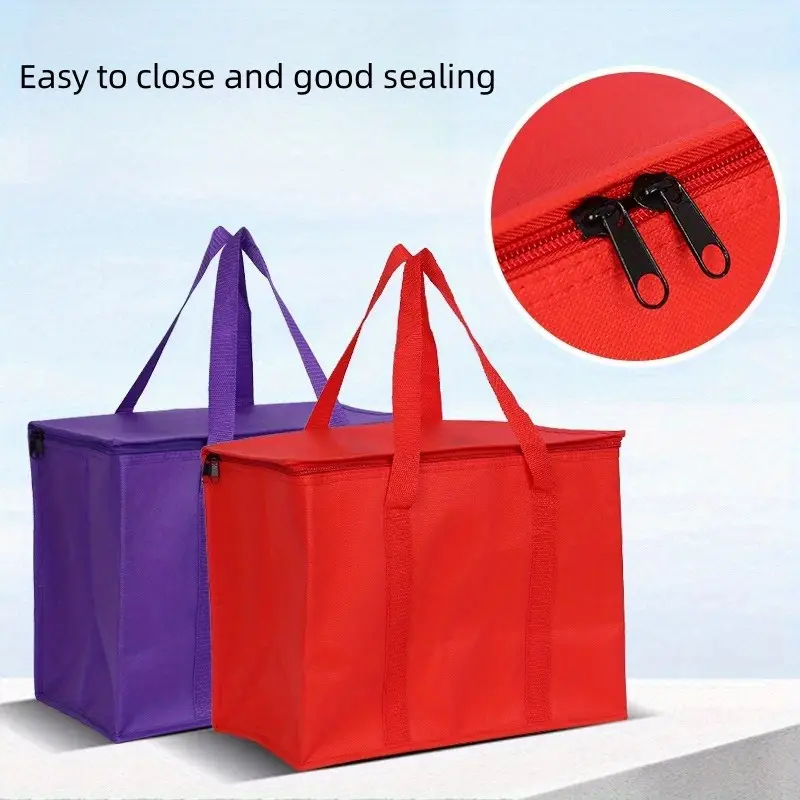
Comfort and convenience are greatly enhanced with thoughtful design elements.
Feature Comparison
| Comfort Feature | High-End Cooler Bags | Low-End Cooler Bags |
|---|---|---|
| Carrying Options | Padded straps, backpack, handles | Basic handles |
| Extra Pockets | Multiple compartments | None or 1 small pocket |
| Internal Organization | Dividers, mesh pockets | No internal layout |
High-end models often include adjustable, padded straps for hands-free carrying and added comfort. They may offer multiple compartments for utensils or dry storage. In contrast, low-end bags often focus only on basic utility, sacrificing ergonomic features. For users planning to carry food or drinks over long distances, these design upgrades are essential.
Longevity and Warranty
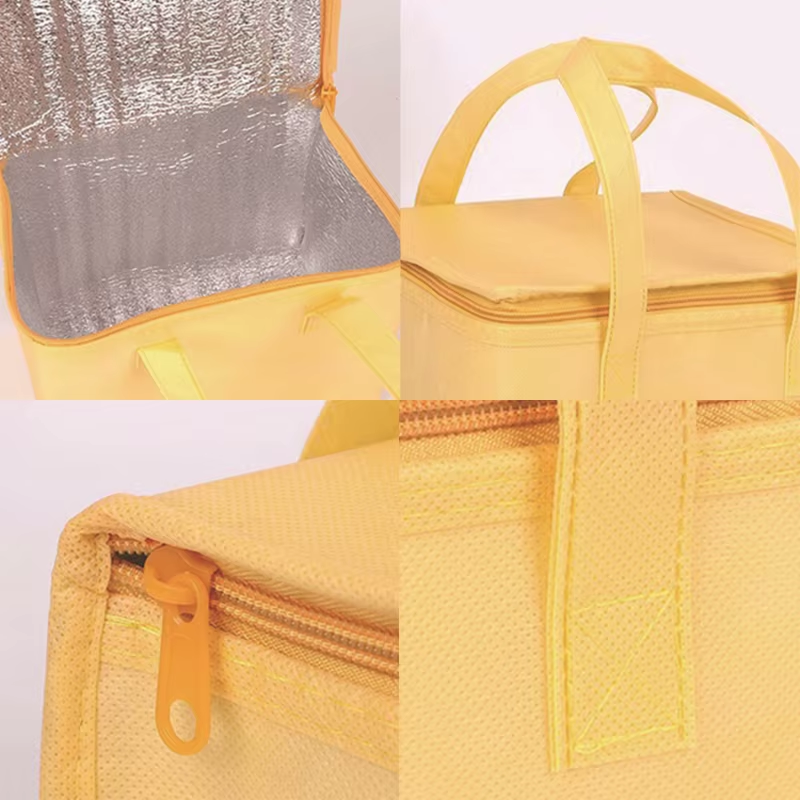
Durability isn't just about materials—it’s also about how long the bag is expected to last.
Lifespan and Warranty Range
| Criteria | High-End Cooler Bags | Low-End Cooler Bags |
|---|---|---|
| Lifespan | 3–7+ years | 6–18 months |
| Warranty Length | 1–5 years | Rarely included or 30 days |
| Construction Quality | Reinforced, durable | Basic stitching |
Most high-end cooler bags are made to withstand years of use and come with multi-year warranties. Low-end bags wear out faster and are rarely covered by warranty. Businesses that depend on consistent performance—like food delivery3 services—benefit from the longevity and service support of premium products.
Price and Value
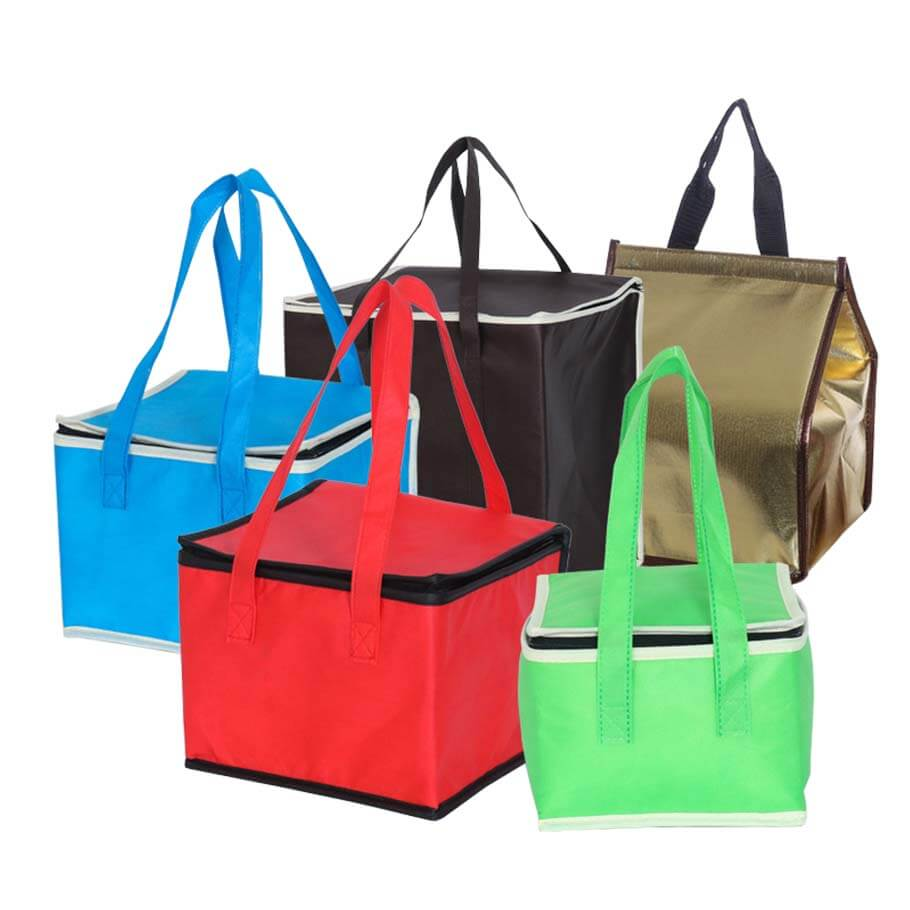
Cost is a major factor, but value includes performance and lifespan.
Value Comparison Table
| Cost Factor | High-End Cooler Bags | Low-End Cooler Bags |
|---|---|---|
| Price Range | $60–$300+ | $10–$40 |
| Value Over Time | High (due to longevity4) | Low to moderate |
| Maintenance Cost | Low | Moderate (replacements) |
High-end coolers require a higher upfront investment but deliver consistent results for years. They often eliminate the need for frequent replacements. On the other hand, low-end bags may save money at first but often cost more in the long run due to lower durability1 and performance.
Conclusion
Understanding the differences between low-end and high-end cooler bags helps you match your budget with performance needs. High-end bags offer long-term durability, better cooling, and superior design, ideal for commercial or outdoor use. Low-end options work best for casual, short-term needs. Personally, I’ve found that investing in a quality cooler bag pays off in convenience and reliability—especially when used for long travel or food transport.
Have you tried both ends of the cooler bag spectrum? Share your thoughts or experiences in the comments!
-
Exploring durability can guide you to a cooler that withstands outdoor conditions and lasts longer. ↩ ↩
-
Understanding insulation quality can help you choose a cooler that keeps your items cold longer. ↩
-
Understanding the role of cooler bags in food delivery can enhance your service quality. ↩ ↩
-
Exploring longevity can help you make a wise investment in a cooler that lasts. ↩


